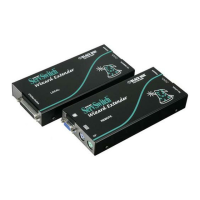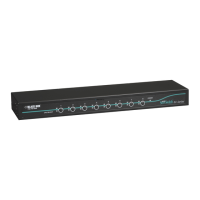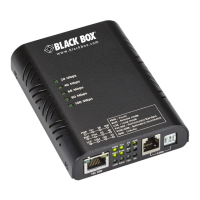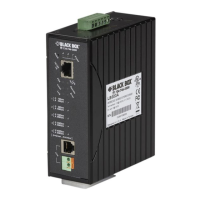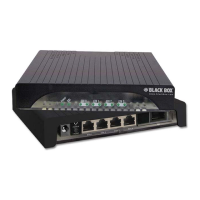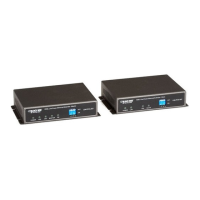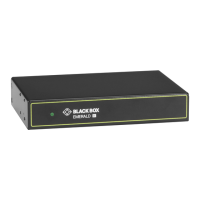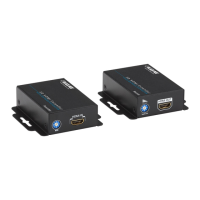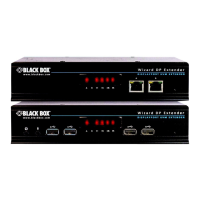REMOTE UNIT CONFIGURATION & OPERATION
25
4. Remote Unit Configuration &
Operation
Cat5/5e/6 cables are specifically designed for networking applications and not for
transmitting analog video. Your CATx KVM extender includes, and requires, advanced
technology to enable its use at high screen resolutions. This section describes how to optimize
the video signal, configure the Extender system and operate the Remote Unit.
For details about flash upgrading and external configuration see Appendix C: Flash
Upgrading & External Configuration, page 44.
For more information about serial/audio port operation, see Appendix E: Audio/Serial
Ports, page 51.
4.1 Video Configuration Overview
To get the best out of your extender system it is essential that you configure it correctly and
tune the video signal. Tuning is necessary because of distortions that occur in a video signal
when it is transmitted over lengthy CATx cables. Generally, you only need to carry out this
procedure after installation. The system stores settings in an EEPROM in the Remote Unit
and restores them whenever the unit is powered up.
When you have installed your extender system, run an application that requires a high screen
resolution. Examine the video image on the Remote console’s monitor. You may see some of
the following distortion effects:
Smearing: black smearing at the right-hand edge of large horizontal
objects such as title bars and characters. To correct this smearing
requires adjustment of LF equalization.
Loss of Sharpness: Loss of high frequency (HF) signals causes
blurring and lack of detail. To correct this requires adjustment of HF
equalization.
Color Separation or Skew: This arises because of timing differences
in the reception of signals for the individual colors. Each color in the
RGB (Red, Green, Blue) video signal is sent down a separate pair of
wires in the Interconnect cable. On many cables, the twist rates differ
and this leads to each color arriving at a slightly different time and
therefore spreading out on the screen. Skew becomes a major problem
at high screen resolutions and with long CATx cables. To correct for
skew, the ‘faster’ colors must be delayed to arrive at the same time as
the slowest.
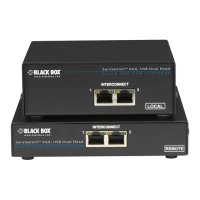
